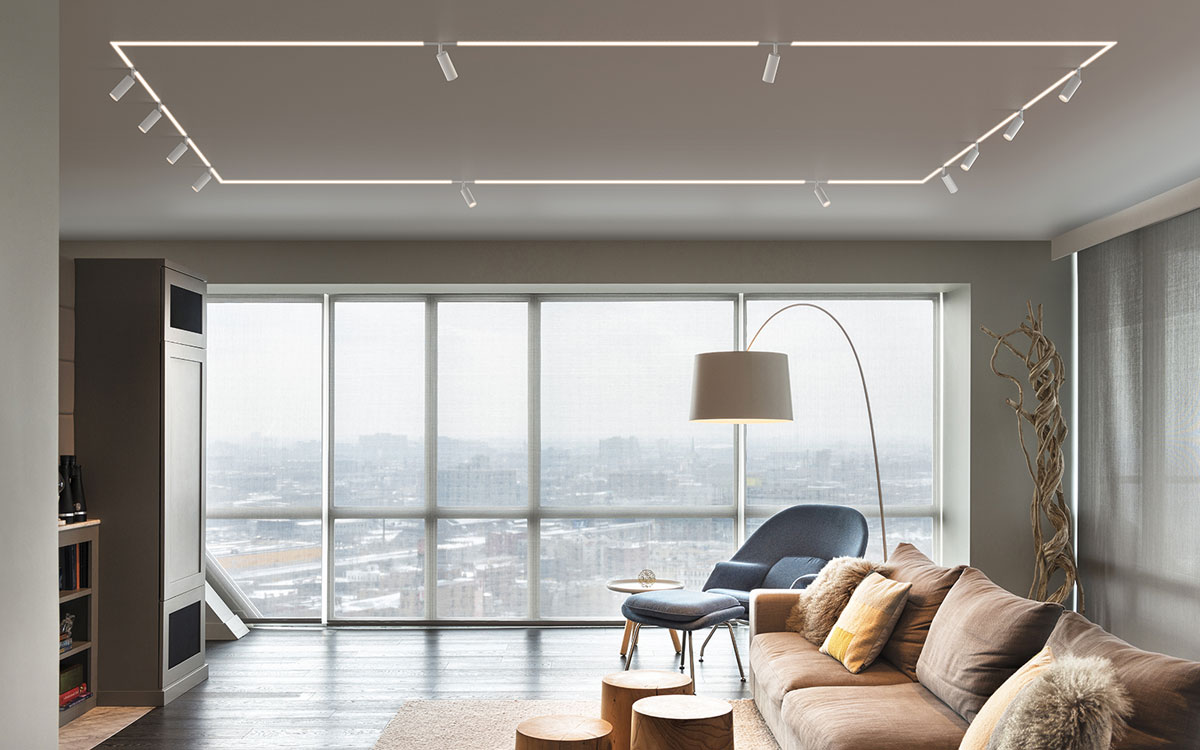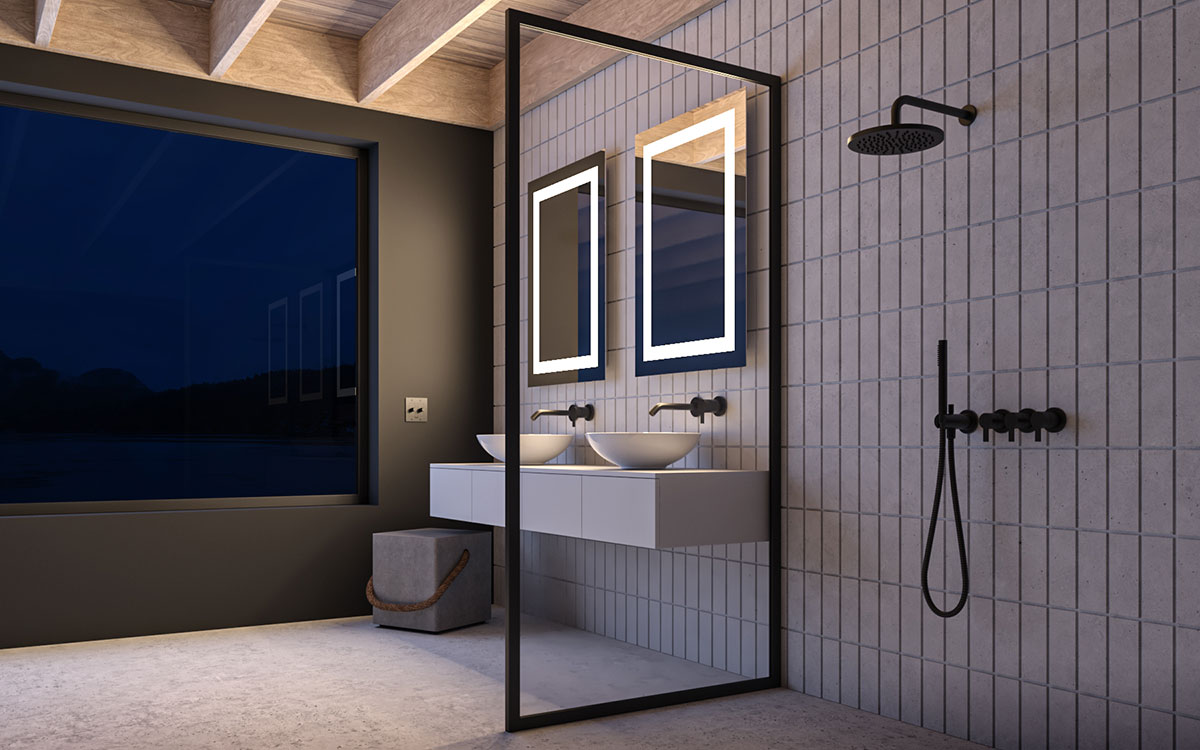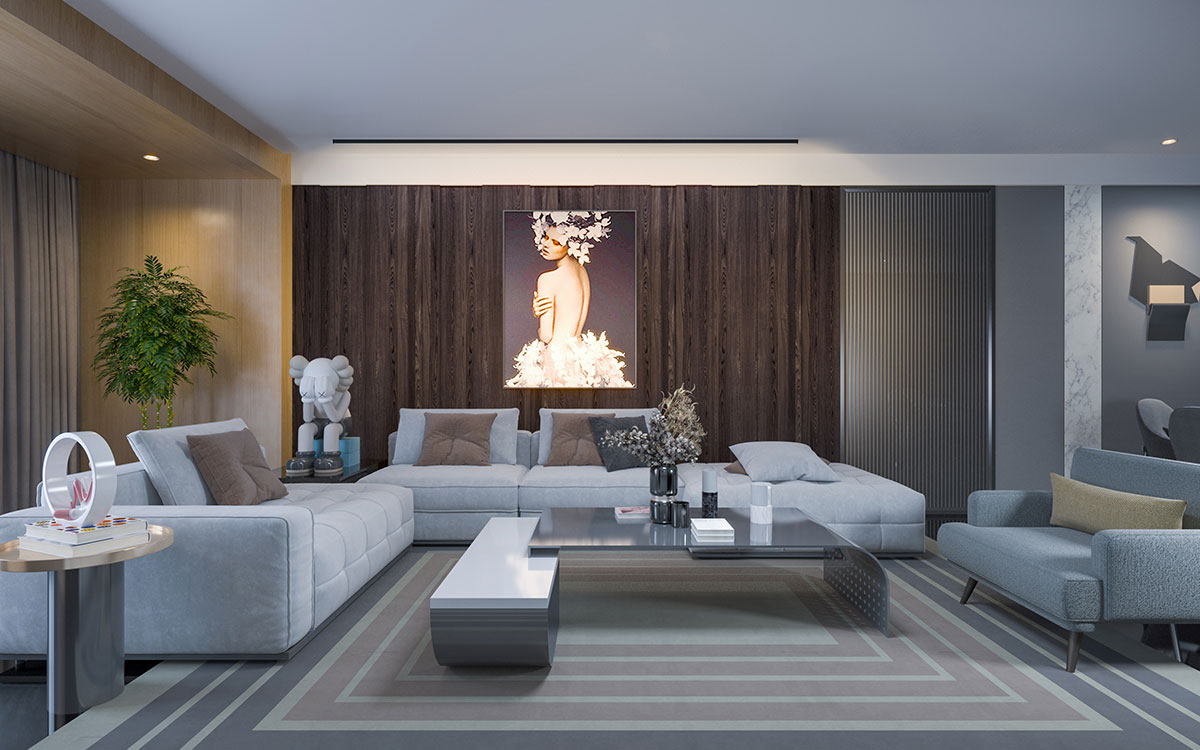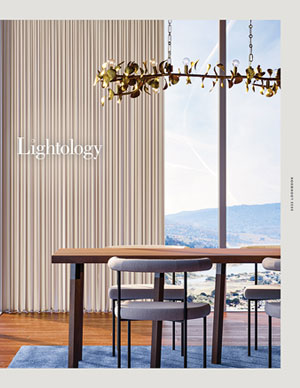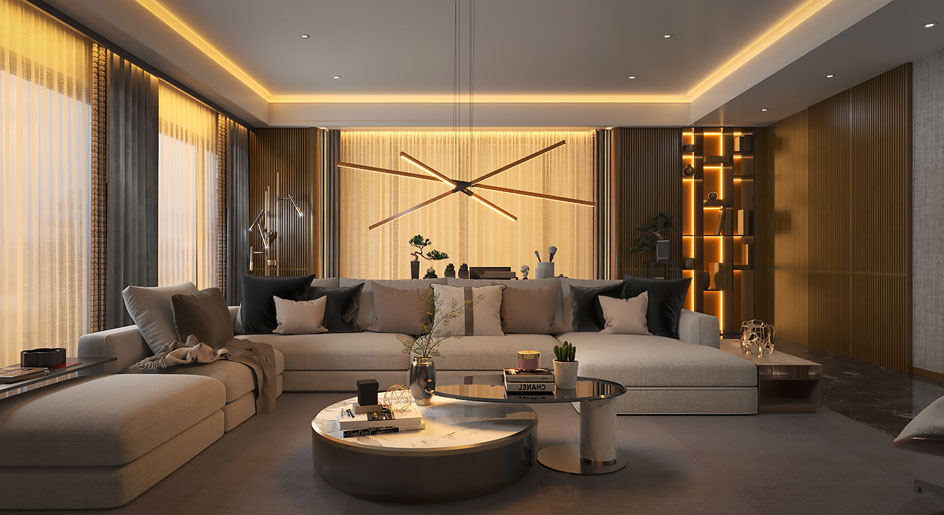
CRI, R9 & R13:
What's the difference?
CRI indicates how accurately a given light source renders colors in the space it illuminates.
CRI, measured on a scale from 1 – 100, indicates how accurately a given light source renders colors in the space it illuminates. Full spectrum light sources like natural light and incandescent (halogen) bulbs have a CRI of 100. Natural white light from the sun is a combination of all colors in the visible light spectrum. Every color is equally represented in a beam of natural light, so it renders the colors of objects accurately.
Creating white light in an LED light source happens either by combining red, green, and blue LEDs in the same light source or by incorporating white phosphors on a blue LED to generate white light, similar to the way fluorescent lights are made.
In either case, the full spectrum of colors isn’t present in an LED light source. Because some colors are missing, this affects how the LED renders colors of objects in the space. LEDs are less “accurate” than natural or incandescent light. However, LED technology is advancing every day, and scientists and manufacturers are coming up with better methods of representing the full color spectrum in white LEDs.

CRI measurements tell us just how accurate LEDs are becoming. Three years ago, LEDs with a CRI of 85+ were considered state of the art. Today, 95+ CRI is the new standard of excellence.
But this isn’t the whole story. Some high-CRI bulbs perform better than others. Two LED bulbs with the exact same CRI rating can actually look different. So what’s going on there?
An LED’s CRI is calculated by measuring its CRI ratings for individual colors and then averaging them out, but it’s only a measurement of colors R1 – R8. This measured average fails to take into account R9 (red) and R13 (skin tone) colors, among others. LED light sources with high R9 and R13 values, in addition to a high CRI (for R1 – R8), do a good job of making skin tones look more healthy and natural.
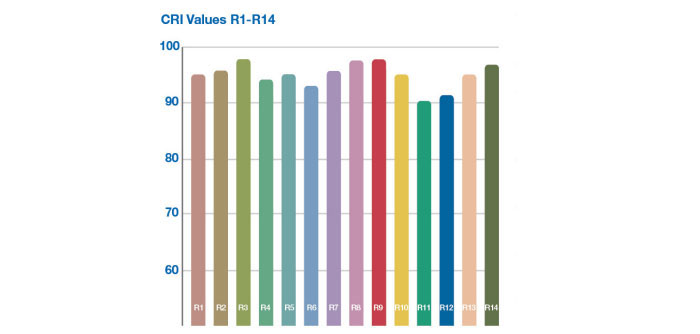
So how does this affect your choice of LED lighting? For living spaces where ambiance is important (kitchens, living rooms, bedrooms, bathrooms), high R9 and R13 LEDs will make you feel more at ease. Our favorite brand for quality LED lighting across the board is PureEdge Lighting.
LED Bathroom Vanity Lighting
In bathroom vanity lighting, R9 and R13 values affect how you appear in the mirror. We recommend Edge Lighting LED lighted mirrors or wall sconces for bathroom vanities.
LED Art Lighting
When lighting artwork high R9 and R13 values bring out richer, truer colors in the pieces.
CRI vs Color Temperature
It’s important to note that CRI is different than color temperature, which is another popular and important measurement of the qualities of LED lighting. As far as CRI, R9, and R13 are concerned, the closer you can get to 100 the better.
Selecting the appropriate color temperature (how warm or cool the undertones of the light are, measured in Kelvin) depends on personal preference and colors that appear in the space. Higher color temperature (cooler) LEDs are appropriate for cool/blue-toned spaces while lower color temperature (warmer) LEDs like 2700K are great for red/warm-toned spaces. Warmer color temperatures provide a cozier atmosphere.

-
What is Color Rendering Index (CRI) and how is it measured?
-
Why is CRI important when selecting lighting for various applications?
-
What is a good CRI rating for accurate color rendering?
-
How does CRI relate to the quality and appearance of light?
-
What is the R9 value and why is it significant in evaluating color rendering?






